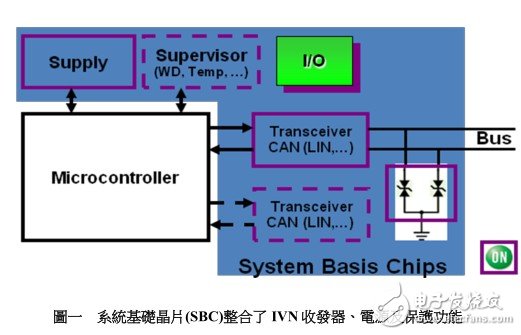The transition from traditional automotive point-to-point wiring to the use of industry-standard in-vehicle networks (IVN) has enabled automakers to add numerous new electronic functions to optimize comfort, convenience, and infotainment systems, optimize chassis and powertrain control, and Electrify various subsystems to save costs and reduce weight. Multiple in-vehicle networks using different protocols coexist in the same car and can support the connection of a large number of nodes. In the early 2000s, there may be only a few network nodes in a typical car. Now the number has increased to more than twenty, and the number of network nodes of some high-end luxury models today may exceed 100. Factors causing this rapid increase in the number of nodes include the use of electronically controlled lighting such as LED bulbs in automotive interior and exterior applications, and the use of advanced driver assistance systems (ADAS), such as collision avoidance and pedestrian recognition. Another factor to consider is the effect of hybrid electric vehicles (HEV) and micro-hybrid technology; the integration of energy recovery devices and electronic traction systems in HEVs has further increased the demand for connectivity in automobiles. Multiple buses, more nodes Several different busbars and various protocols are commonly used in automobiles to meet the different needs of body electronic systems, power system controllers, infotainment systems, and safety-oriented electronic functions. The industry standards involved include Area Interconnection Network (LIN) and SAE J2602, Controller Area Network (CAN) and FlexRay. Higher bandwidth signals, such as the camera feed signal mounted on the body, may be distributed using the 24.8 Mbps Media Guided System Transmission (MOST) standard or the IDB-1394 (gas FireWire) standard operating at 800 Mbps. Automotive Ethernet will also be a function of automobiles in the future to match high data rate applications and serve as a backbone network connecting different functional subnets. LIN supports data rates up to 20 kbps, which is sufficient to control a large number of body electronics applications, such as window regulators, rearview mirrors and headlight regulators, seat position adjustment mechanisms, and other motors, pumps and fans. LIN supports simple command / confirmation communication; intelligent subsystems such as electromechanical modules are responsible for generating the required motor drive waveforms [ more details ]
Best Budget I7 Laptop is everyone eager to. Laptop Intel Core i7 is the No. 1 processor clients choose when they are searching for a performance Gaming Laptop,cause it`s of excellent powering, bigger Solid State Drive, usually 512GB based, full HD 16:9 aspect ratio slimmer display bezels, bigger battery-12000mAh-no need to worry lack of power, fingerprint reader, backlight keyboard, etc. What is intel Core I7 Laptop Price? Usually 300-400usd. You can get Intel i7 11th Generation Laptop, Intel i7 10th Generation Laptop, Intel I5 11th Generation Laptop, Laptop I3 11th Generation,etc. 15.6 or 14 inch all available for i7 processor.
Cooperating with us, you just need to share all your requirements details, like size, cpu, ram, rom, battery, fingerprint, backlight, enter button numbers, SSD+HDD or only SSD ok, if need oem service, if need logo position, special apps preinstall if need, etc. Can provide matched and value feedback in 1-2 working days.
The reason why clients choose us is that just half of DOA than others, longer warranty time, smaller MOQ, fast delivery, competitive cost, good after-sale service, etc.
Laptop Intel Core I7,Intel Core I7 Laptop Price,Best Budget I7 Laptop,Intel I7 11th Generation Laptop,Intel I7 10th Generation Laptop Henan Shuyi Electronics Co., Ltd. , https://www.shuyielectronics.com